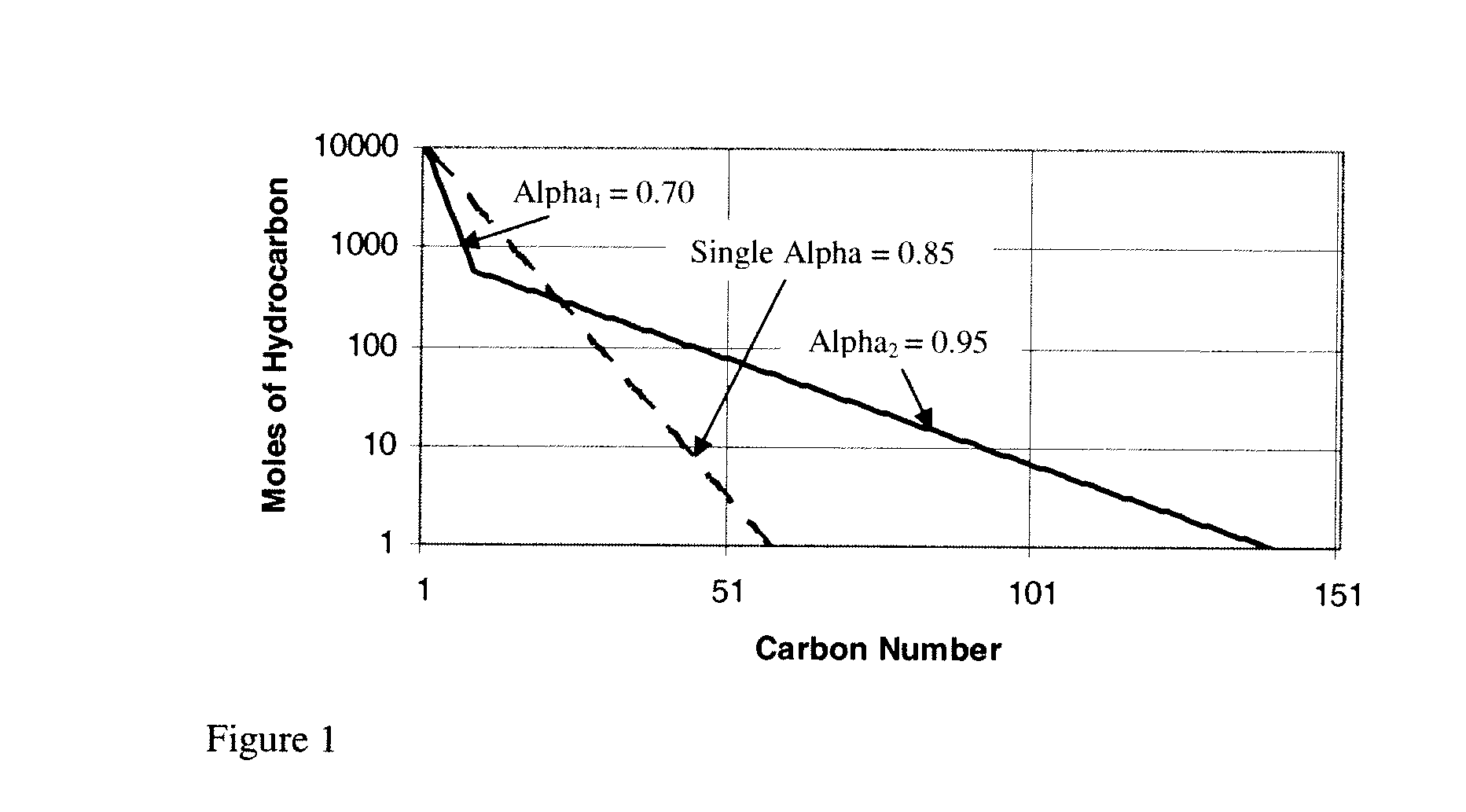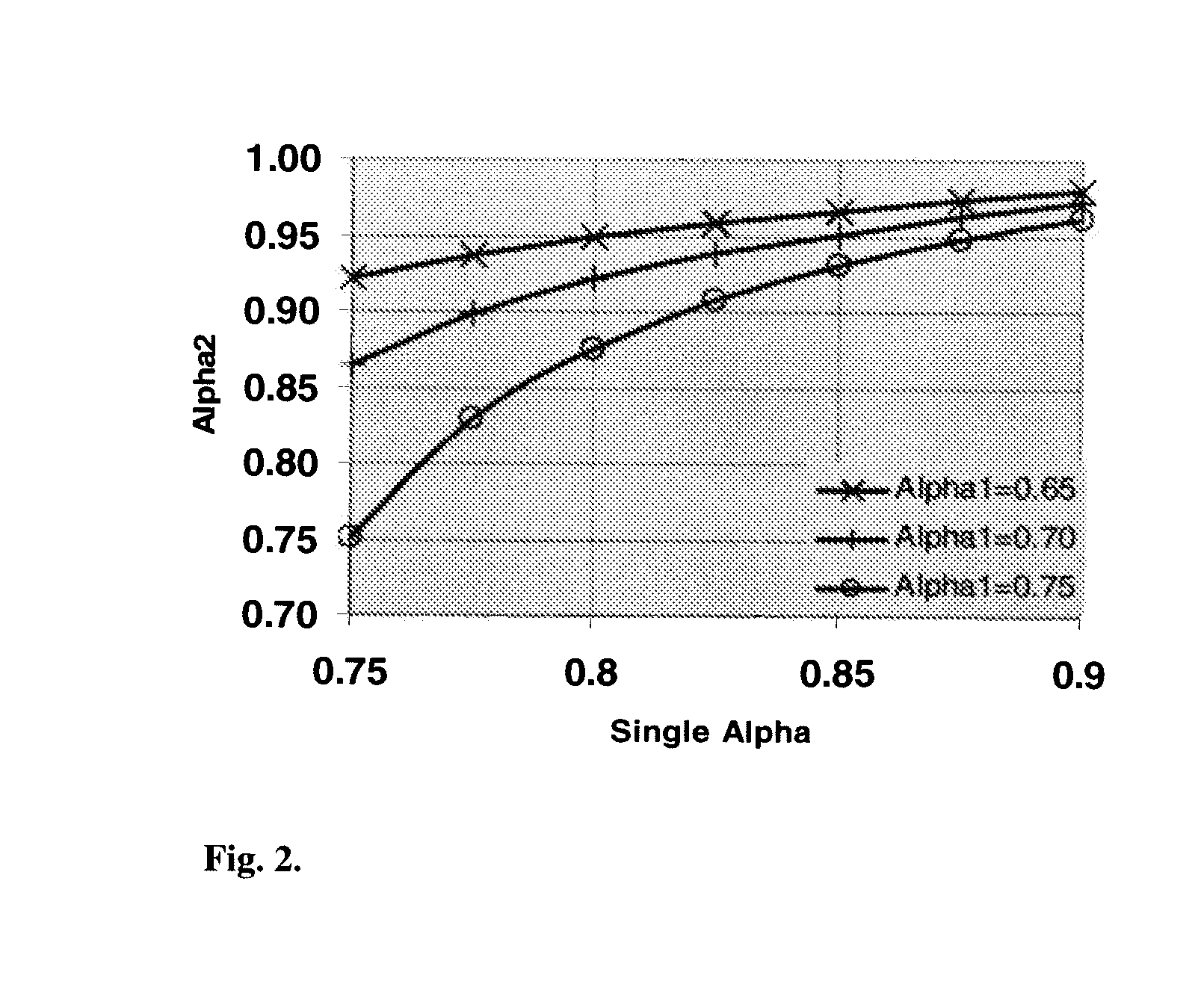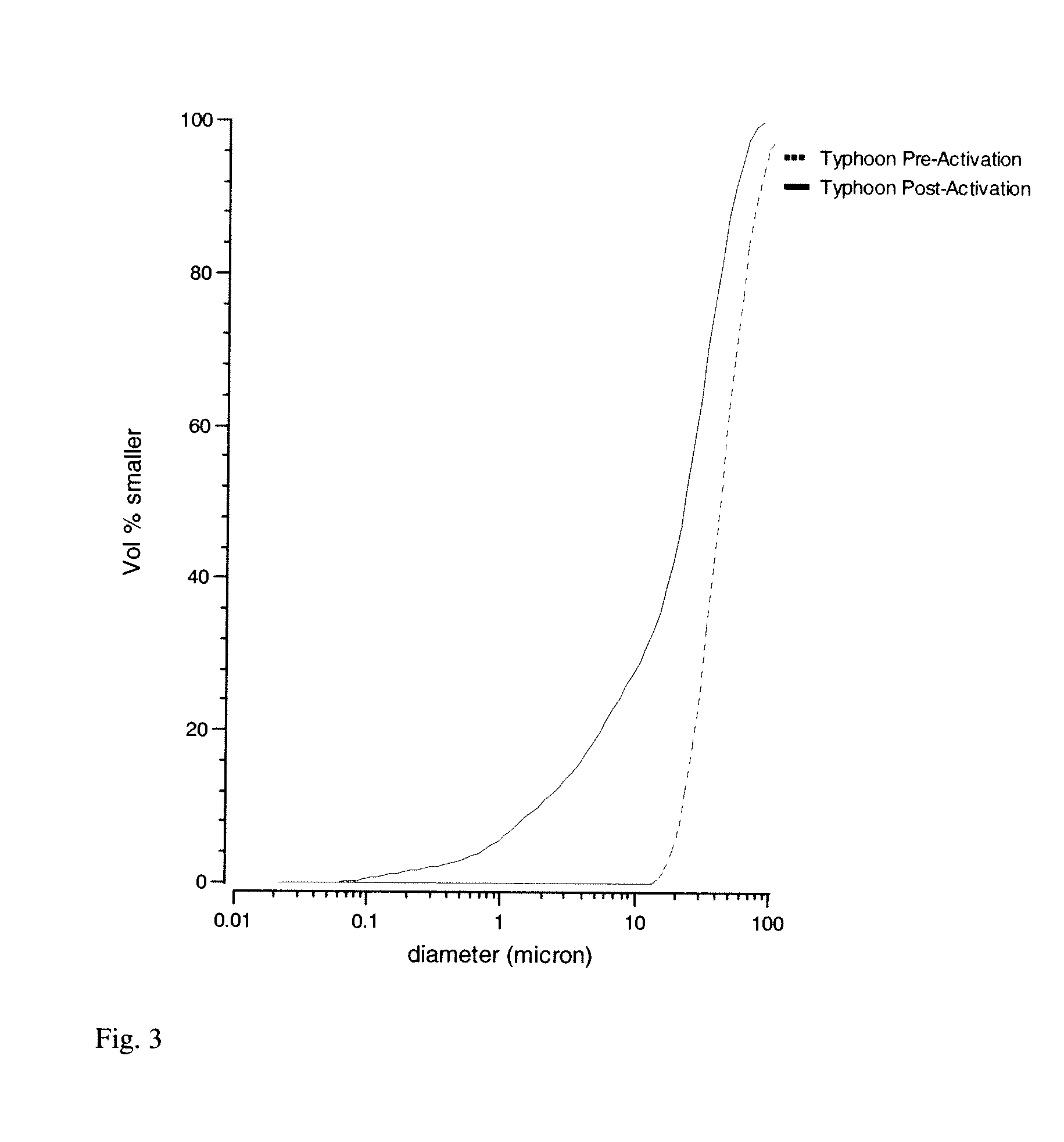Method for activating an iron-based fischer-tropsch catalyst
a technology of fischertropsch and catalyst, which is applied in the field of activation of an unsupported iron-based fischertropsch catalyst, can solve the problems of difficulty in obtaining alpha values from gas and liquid product analysis, time-consuming, and problems in downstream separation equipment, so as to reduce the partial pressure of the synthesis gas used, and reduce the amount of fines produced
- Summary
- Abstract
- Description
- Claims
- Application Information
AI Technical Summary
Benefits of technology
Problems solved by technology
Method used
Image
Examples
example 1
[0026]Run 75 was conducted to establish baseline performance for the typhoon induction procedure. This typhoon induction procedure differs from that described in the '118 patent in that a temperature of about 270° C. was used instead of 280° C. Also the space velocity (SV) was reduced in Run 75 to about 1.18 from that specified in the '118 patent of about 2.6. No particle size samples were taken in this run. The procedure was run for an induction period or time on stream (TOS) of about three hours and for an additional twenty four hours under standard operating (run) conditions. The results for Run 751 (induction phase) and Run 75R (operation phase) are shown below in Table 1. Alpha values for the induction and operation phases are shown to be about 0.84 and about 0.85, respectively. The CO conversion values for the induction and operation phases are shown to be about 92% and about 88%, respectively.
example 2
[0027]Because no particle size samples were taken in Run 75, the induction phase of Example 1 was repeated. Run 80I was conducted using the same induction parameters as the typhoon induction phase of Run 75I. Run 80I was allowed to proceed for about a three-hour induction period. Data for this run are shown below in Table 1. Cumulative particle sizes for the catalyst before and after induction are shown in FIG. 3. The typhoon induction resulted in the generation of about 30% particles smaller than about 10μ. The alpha value is shown to be about 0.83, and the CO conversion is shown to be about 89% at the end of induction.
example 3
[0028]In Run 81, the partial pressures of hydrogen and carbon monoxide were reduced by a factor of about 4.5 by diluting the gas with nitrogen during the induction period. To compensate for the lower partial pressures of activating gases, the induction time was extended to about 14.5 hours. Thus, the induction is deemed to be a long (or slow) dilute. Consequently the same cumulative number of moles of synthesis gas passes through the reactor during induction. As can be seen in Table 1, the alpha value was very low at the end of the induction period. After about 24 hours of operation, the carbon monoxide conversion had increased to a very high level of about 98%, but alpha had improved to only about 0.78. The particle size plot of FIG. 4 shows that there was generation of some particles smaller than about 10μ, about 4%, which indicates a reduction in catalyst attrition occurred because of a nitrogen dilution of the syngas. The reduction in catalyst attrition may be considered signifi...
PUM
| Property | Measurement | Unit |
|---|---|---|
| temperature | aaaaa | aaaaa |
| molar ratio | aaaaa | aaaaa |
| temperature | aaaaa | aaaaa |
Abstract
Description
Claims
Application Information
 Login to View More
Login to View More - R&D
- Intellectual Property
- Life Sciences
- Materials
- Tech Scout
- Unparalleled Data Quality
- Higher Quality Content
- 60% Fewer Hallucinations
Browse by: Latest US Patents, China's latest patents, Technical Efficacy Thesaurus, Application Domain, Technology Topic, Popular Technical Reports.
© 2025 PatSnap. All rights reserved.Legal|Privacy policy|Modern Slavery Act Transparency Statement|Sitemap|About US| Contact US: help@patsnap.com



